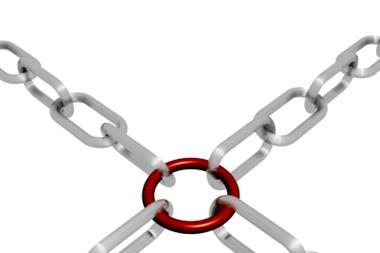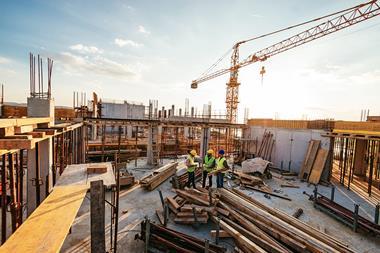‘There may be only two manufacturers in the world of what you need. You need to know what their capacity is. If one has problems, is there capacity available in the other? If there isn’t, there will be an awful lot of delayed projects’
Like many sectors, smart operators in construction have been taking a long, hard look at their supply chains in recent years. From commodities to specialist technical kit, construction firms rely on a huge variety of globally sourced products. A failure in the supply of something critical could cause a catastrophic delay in a project getting off the ground.
“What we found can be that both the insurance and risk market was too focused on internal supply chains and not focused on the external supply chain,” says Nick Wildgoose, global supply chain risk product leader at Zurich Global Corporate. “In general, it was also too focused on physical threats.
“One of the problems was cost pressure: they just did not have the resources to explore their exposure fully. But even where they were doing proper risk assessments, they were saying that they needed to rely on their direct/tier one suppliers to manage their own risks.
“Well, clearly, if we are talking about a critical supply chain, that is opening a firm up to all kinds of problems.”
Dangerous thoughts
“If a critical supplier fails to deliver, your customer is going to see it as your issue,” says Wildgoose. “It is no good saying to your chief executive: ‘Oh, I’m sorry, it was our supplier that failed. They hadn’t looked far enough down their supply chain.’
“In fact it is you that haven’t looked far enough down the supply chain. If a contract supplier fails because it cannot get a critical piece of equipment on to your site, it is still you, the construction firm, that fails. If it doesn’t arrive, that’s that.”
The way out of this dangerous way of thinking is to really engage with the worst-case scenario and develop a detailed understanding of what can cause disruption in your supply chain, and exactly how – and for how long – that disruption will affect your ability to deliver a project.
“One of the interesting commonalities in the sector is that, as construction moves to a more manufacturing type of approach, it is developing an exposure to similar risks to that sector,” says Wildgoose. “A key issue is when dealing with large items of capital equipment, such as lift assemblies for a large office block. If you get a problem in the supply chain – if you neglect your resilience – you could be looking at a six- to 12-month delay.”
Getting a grasp of your resilience means looking broadly at your suppliers and what influences their capacity to deliver. Delays can be caused by a range of factors, not least of which is the macroeconomic climate and the boom-and-bust nature of construction. “At one moment suppliers are mothballing equipment, and then at the next minute they are being asked to rapidly ramp up production,” says Wildgoose. “There may be only two manufacturers in the world of what you need. You need to know what their capacity is. If one has problems, is there capacity available in the other? If there isn’t, there will be an awful lot of delayed projects.
“You need to know where the failure points are and what your capacity is to respond.”
But you also need to look beyond physical kit. “In some ways, it’s easy for people to relate to the flow of goods and its effect on business,” says Wildgoose. “But don’t neglect issues like IT and telecoms outages.
“Without the information that goes with your supplies, you can find yourself with serious disruptions.”
This article was first published in StrategicRISK’s Construction Report, published in association with Zurich. To download a copy of the full report, click here




















No comments yet